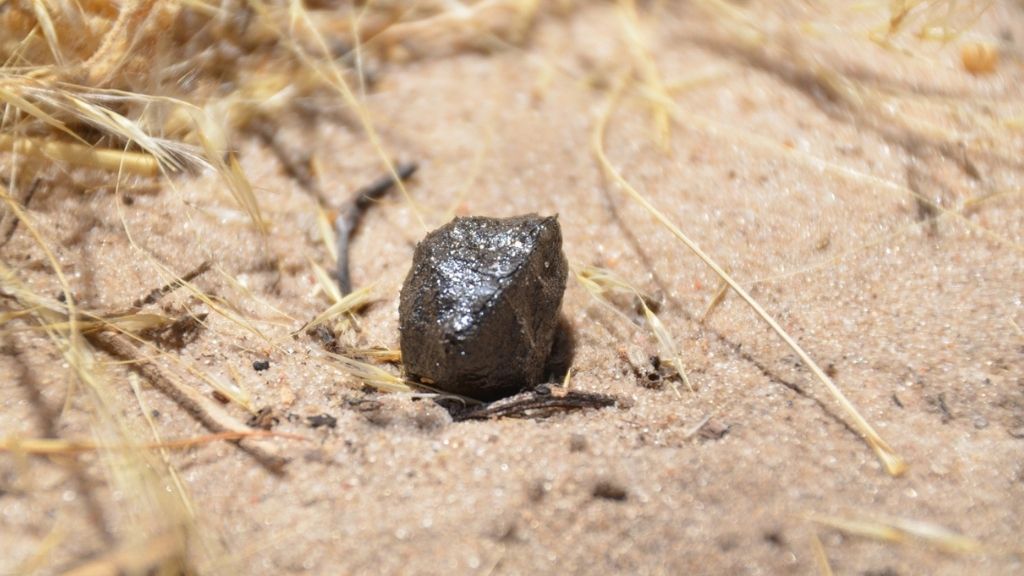
Can You Guess What This Is? (And No, It's Not Roo Poo...)
Share
During the summer of 2018, an asteroid barreled through the sky and burned up over the Kalahari Desert of Botswana. Now, scientists think it came from Vesta, the second largest asteroid in our solar system.
According to a statement from the SETI Institute, a telescope at the University of Arizona first noticed the asteroid, named 2018 LA, whizzing through the stars like a speck of light.
SETI Institute meteor astronomer Peter Jenniskens said in a statement, "this is the second time we've seen an asteroid in space before it hits Earth." "The first was asteroid 2008 TC3 in Sudan 10 years earlier."
2018 LA came tumbling out of the sky over Botswana and turned into a brilliant fireball hours after it was spotted. The SkyMapper Telescope at Australian National University (ANU) captured the meteor's final moments before it exploded, and surveillance cameras caught its final moments in black-and-white.
"These last images before the asteroid entered Earth's atmosphere were SkyMapper's biggest contribution. They helped to pinpoint both the search area for the meteorite fragments on Earth and the meteor's origin in space," Christopher Onken, the ANU SkyMapper Project Scientist, said in a statement from ANU.

Little rock make big light...
A team of scientists measured the position of the meteor fragments on the ground after it disintegrated, according to the available astronomical observations; this region happens to fall within the Central Kalahari Game Reserve, a national park in the Kalahari Desert.
"The meteorite is named 'Motopi Pan' after a local watering hole," Mohutsiwa Gabadirwe, a geoscientist at the Botswana Geoscience Institute (BGI) in Lobatse, said in the SETI statement.
After searching the park on several field expeditions, the team uncovered 23 fragments of the Motopi Pan meteorite; they then analyzed the isotopes, or versions of elements with different numbers of neutrons, within the meteorite bits. These isotopes hint at the chemical composition and size of the original asteroid, prior to when it burst through the atmosphere.

Mohutsiwa Gabadirwe (center of photo) and Peter Jenniskens (left, kneeling) at the site of the second find of asteroid 2018 LA in central Botswana.
2018 LA originally measured about 5 feet (1.5 meters) in diameter and had been zooming around in space for about 22 to 23 million years before crash-landing on Earth, the team determined. The rock was traveling about 37,280 mph (60,000 km/h) before entering the planet's atmosphere, according to the ANU statement.
The rocky fragments also resembled a set of meteorites called Sariçiçek that fell in Turkey last year, according to further analysis.
According to the American Museum of Natural History (AMNH), both sets of meteorites are howardite-eucrite-diogenite (HED) meteorites, the only class of meteorites that come from Vesta. Eucrite bits in meteorites are hardened lava from Vesta's surface; diogenites are minerals buried beneath Vesta's surface; and howardites are a unique mix of the other two rock types, created when objects collided with Vesta.
Jenniskens said material from asteroid 2018 LA is mostly howardite, but some fragments have more affinity for diogenites and eucrites. The asteroid was formed out of breccia, which is a mix of distinct rock pieces that came from different parts of Vesta.
"The oldest known materials found in both Vesta and in the meteorite are zircon grains that date back to more than 4.5 billion years ago, during the early phase of the solar system," Onken noted. 2018 LA's orbital path around Earth also points to Vesta as the asteroid's origin point, the authors found.
Motopi Pan and Sariçiçek are both HED meteorites, but they differ in a few ways. Scientists estimate that the material in both meteorites probably solidified on Vesta about 4.563 billion years ago, but phosphate grains in Motopi Pan showed signs of melting in recent history, while Sariçiçek didn't.
This suggests Motopi Pan formed close to a large impact event about 4.324 billion years ago. On Vesta's surface, there's a giant dent called Veneneia impact basin, which is thought to be formed by the same event.
"We now suspect that Motopi Pan was heated by the Veneneia impact, while the subsequent Rheasilvia impact," which occurred later and partially obscures the Veneneia impact basin, "scattered this material around," Jenniskens said.
"Because the team tracked the rock from space all the way down to the impact site, they were able to calculate a very precise orbit that is consistent with an origin near Vesta, providing one of the best links we have between an asteroid and meteorites," Ashley King, a planetary scientist at the Natural History Museum who was not involved in the work, told The Guardian.
Thanks for reading!
Please share with an astro friend to spread ARSE and thrust Australia into the deep unknown…
#Space_Aus




